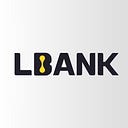Ethereum and Its Scaling Solutions: What Are Roll-Ups?
After understanding Ethereum Layer 1 and Layer 2 protocols, it is best to know some of the mechanisms powering its scalability.
Ethereum gas fees can get expensive but thanks to hybrid layer 2 solutions known as rollups saving the day for the network.
Presently, rollups are the most preferred Layer 2 solution for scaling on the world’s second-largest blockchain platform. With rollups, users can reduce gas fees by almost 100x in contrast to L1.
Since Ethereum blocks are limited to the amount of data they can hold, rollups are beneficial because they lower gas costs, increase transaction throughput (TPS), and broaden participation.
For example, let’s say a block can only do 200 transactions. This means that if 200,000 people want to do a transaction at the same time, Ethereum will pick 200 of the highest bidding fees first.
In contrast, rollups can enable 2,000 transactions per block rather than 200, simply by using the data portion rather than the transaction portion.
What Is a Rollup?
Rollups are layer 2 scaling solutions that merge hundreds of transactions into a single transaction on layer 1. This makes it cheaper because it distributes the L1 transaction fees across everyone in the rollup.
Roll Ups move transactions off-chain but keep some data of every transaction on-chain so that anyone can verify the computed state.
By default, rollups inherit the security of Ethereum since its transaction information is posted on L1.
How Rollups Work: Functions, Security and Scalability
To maintain security and scalability, rollup systems must have multiple roles, and any user with a computer can adapt to any of these roles.
The main role is called Aggregator, and users can connect to it via peer-to-peer and send off-chain transactions.
The aggregator computes new off-chain blockchain states after applying them, wraps them all in an array of transactions, and sends it to the on-chain smart contract along with the state root after a certain number of transactions.
In rollups, multiple transactions are computed off-chain and then compressed and aggregated into a batch containing transaction information.
Following that, the batch is uploaded to the layer 1 roll-up smart contract to update the state. The difficult part is proving that the new state is correct and that it was not changed by a malicious participant.
Of note, Batch refers to the compressed data included in the transaction. They are compensated for their work by the fees included in the user’s transactions.
How Ethereum Knows That Posted Data Is Valid
Generally, each roll-up deploys a set of smart contracts on Layer 1 that are in charge of processing deposits and withdrawals as well as verifying proofs. In the end, it is up to the specific rollup implementation.
On the Ethereum blockchain, there are two types of rollups currently in use:
Optimistic Rollups (fraud-proofs) and Zero-knowledge rollups (validity-proofs).
Optimistic Rollups
Optimistic roll-up transactions are written into the main Ethereum blockchain, improving transaction efficiency by lowering the cost of gas.
Optimistic rollups assume that transactions are valid by default and only run computation through a fraud-proof, which means that it only presents evidence that a state transition was incorrect when someone decides to challenge the transaction.
Optimistic roll-ups operate on layer 2 in parallel with the Ethereum Mainnet and do not perform any computation (mathematical equations) by default. Instead, they submit the new state to the Ethereum Mainnet after the transaction is complete, effectively notarizing the transaction.
Zero-knowledge Rollups (ZK Rollups)
Zero-knowledge rollups or ZK rollups aggregate thousands of transactions of the main Ethereum chain and generate a cryptographic proof known as validity proof, or SNARK (Zero-Knowledge Succinct Non-Interactive Argument of Knowledge), which is then published on the Ethereum Mainnet.
The smart contract for ZK roll-up stores the data of all transfers on layer 2 and the data can only be edited with validity proof.
In other words, ZK rollups only require validity proof rather than all transaction data. This function reduces transaction costs by including less data.
To Conclude
Overall, rollups are Ethereum’s solution to high gas fees, slow transaction times, and scalability issues.
However, before using the Ethereum network, it is best to conduct extensive research on the various scaling solutions available.
Buy, sell and store Ethereum (ETH) on LBank.
Disclaimer: The opinions expressed in this blog are solely those of the writer and not of this platform.
Community & Social Media:
l Telegram
l Twitter
l Facebook
l Linkedin
Contact Details:
LBK Blockchain Co. Limited
Downtown, Dubai
